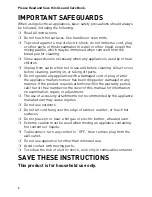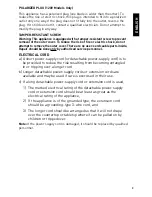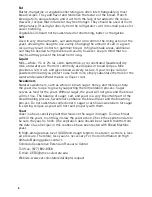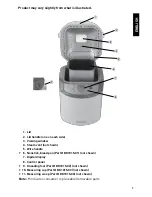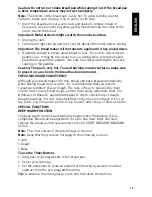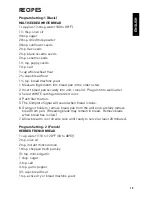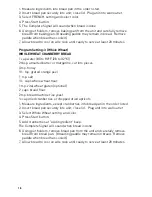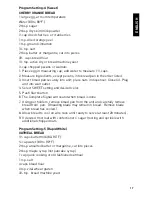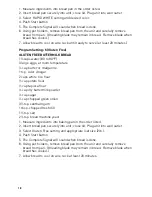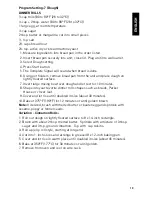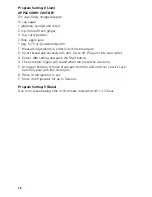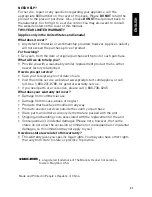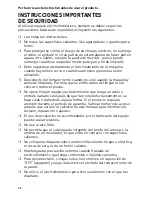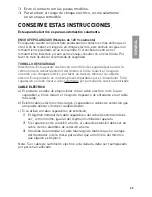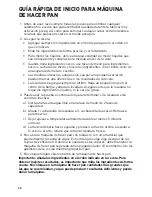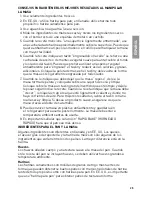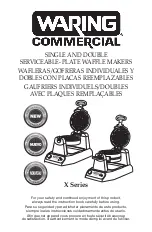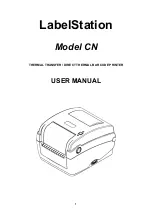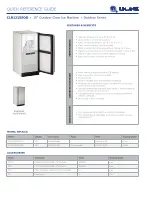
10
How to Use
This unit is for household use only.
HELPFUL HINTS FOR USING YOUR BREAD MAKER
1. Follow the directions: The liquid is always the first ingredient. dry ingredients
follow and the yeast is added last. Make a small well in the center of the
flour and place the yeast there. This is especially important when using the
delay-bake function to avoid activating the yeast too soon.
2. Measure carefully: Use the appropriate measuring tools and measure
carefully. The measuring cup included should be used for dry measurement
only. Spoon dry ingredients into the measuring cup and level off with the
straight edge of a metal spatula or the back of a knife. Measure liquids in a
glass or plastic measuring cup designed for liquids. Use measuring spoons
for liquid and dry ingredients. level off with a metal spatula or the back of a
knife.
3. Keep it fresh: Use fresh ingredients at room temperature. In Canada, use
All-Purpose Flour or Bread Flour; in the USA, use Bread Flour. Use yeast
that has an expiration date of at least 6 months in the future. Avoid using
perishable ingredients (such as milk, eggs and cheese) when using the delay-
bake function.
4. Perfect dough: In very humid weather, bread may require a little more flour.
Check the bread toward the end of the first rise. If it seems sticky, add 1 or
2 tablespoons of flour to the second kneading cycle until the dough forms
a smooth ball. If the bread seems very dry or knocks in the kneading cycle,
sprinkle room temperature water into the bowl, 1 teaspoon at a time, until
dough forms a smooth ball.
5. look, but don't open: The glass in the cover is there to monitor the process.
do not open the lid during the rise and baking process. In the initial mixing
you may open the cover to use a rubber spatula to blend in any ingredients
that have stuck to the sides of the bread pan or to add ingredients at the
“add ingredient” beep.
6. Patience: Wait at least 20 minutes before slicing freshly baked bread; it will
still be deliciously warm but easier to slice. If you like a crisp crust, remove
the bread as soon as the baking cycle is complete. To make another loaf of
bread, let the unit cool completely.
7. Save it for another day: To freeze freshly baked bread, cool completely on a
wire rack. Wrap securely in plastic wrap and then foil using a drugstore close.
To serve, remove from foil and defrost in microwave wrapped in paper towels.
For that freshly baked flavor, reheat in the oven.
8. Adding ingredients: All functions except Rapid, allow for the addition of
ingredients, such as dried fruits and nuts; the beep sounds just before
kneading is complete. This happens about 30 minutes into the program.
9. Avoid delay: The delay-bake function cannot be used for Rapid, Quick Breads
or the dough setting. It is not recommended for Whole Grain or Preserves.
10. Test the water: For most breads, use water that is 80° to 90°F (26 °C to
32 °C); for Rapid Bake breads, use water at 110°F to 120°F (43 °C to 48 °C).


